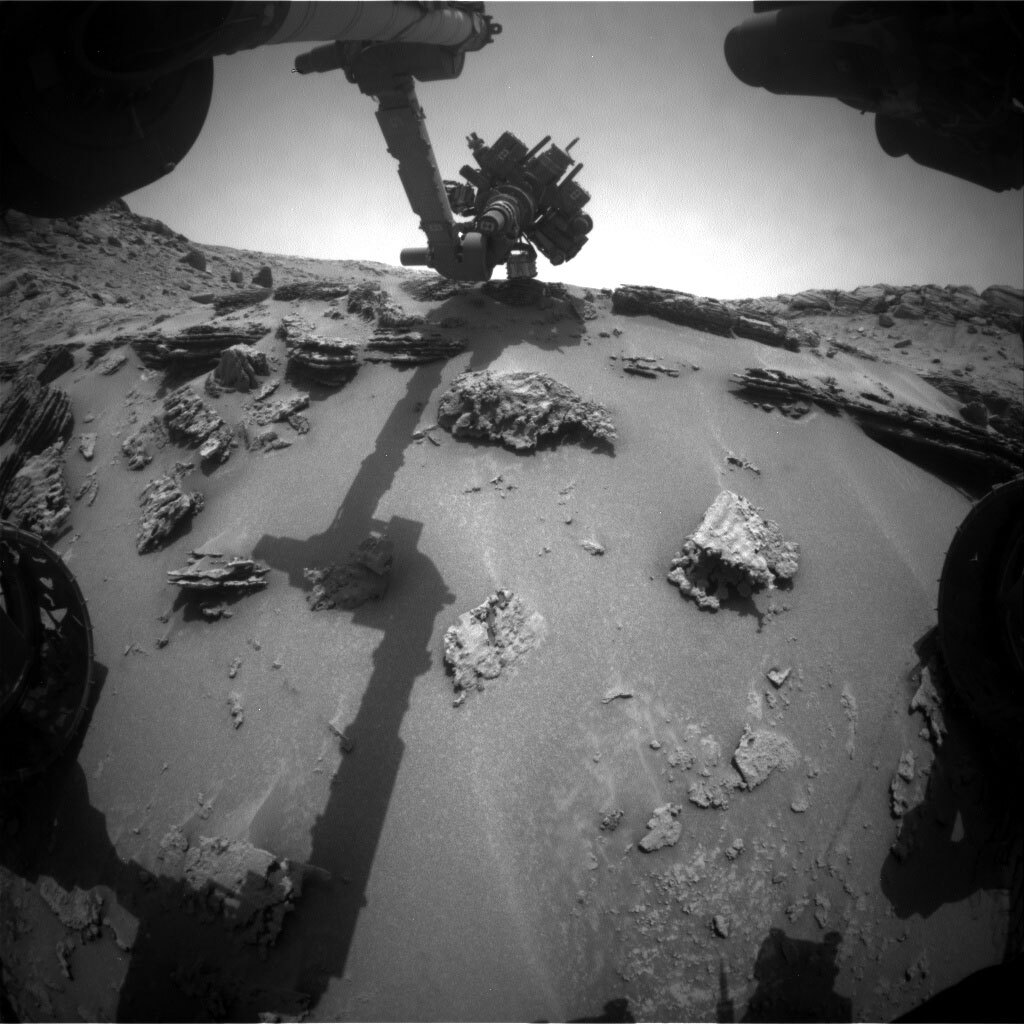3 min read

🎵 On the first sol of Christmas, Curiosity will bring to us; one APXS analysis, one ChemCam analysis and a multitude of Mastcam, MAHLI and RMI images! On the second sol of Christmas, Curiosity will bring to us; more ChemCam RMI images, more Mastcam images, more Navcam images and a drive to a new, exciting location. 🎵
To allow for the MSL science team and engineers to take some time off over the holidays, we typically uplink long, multi-sol plans to keep Curiosity occupied while we enjoy the festivities. The rocks currently exposed in front of us have fascinating and beautiful textures, which we are attempting to characterize before we drive away in the second sol of this 10-sol plan. The dark, grey rocks exhibit unusual laminations with uniform spacing and thickness (termed rhythmic), with superimposed rounded and resistant, but hollow protuberances (which we have coined “barnacles,” even though these nodules formed naturally in the rock). What processes were responsible for the formation of the rhythmic layering, and the hollow nodules? How do these rocks compare compositionally and texturally with the immediately underlying rippled bedrock? These are all questions we hope to address with the suite of measurements we made in yestersol’s plan and those we uplink tosol. ChemCam and APXS will measure the composition of the nodules (“Aracara” and “Truaru” respectively), and Mastcam and MAHLI will image those two targets on the first sol. This data can be compared with the compositional data we obtained yestersol on the rhythmically layered rocks (e.g., “Tamandua”). A MAHLI dog’s eye mosaic will also be acquired over a region of the hollowed features (“Wapixana”) to hopefully shed light on their formation process. The dog’s eye mosaic involves a number of images being acquired along the rock face, as close to perpendicular as possible. We will continue to document the rhythmic layering with Mastcam images of a region, “Quixada.”
Before we drive on the second sol of our holiday plan, we will acquire one more ChemCam analysis and Mastcam image of the rhythmically laminated rocks at the target, “Vert-Barauana,” that looks like a relatively freshly exposed face. Before the drive, the ChemCam RMI capability will also be utilized to image the bedrock layer we are currently investigating off to the south.
The drive will take us back to an area that we previously drove over, exposing interesting bright soil and crushed rock. Before we drive, we will capture some of these disturbed bright soils and rocks with Mastcam imaging. The bright soils and rocks will hopefully be in our workspace for the next multi-sol holiday plan. To fully document the terrain below us, and any transitions that may occur as we drive, a MARDI image was also planned.
The environmental science team were also busy and planned several observations to continue monitoring changes in atmospheric conditions over the holidays. These include: a Navcam large dust devil survey and suprahorizon movie; a Mastcam stereo sky column and full tau observation; and an APXS atmospheric measurement. Standard REMS, DAN and RAD activities round out this plan, with the REMS activities occurring in the background throughout the 10 sols.
Written by Lucy Thompson, Planetary Geologist at University of New Brunswick







